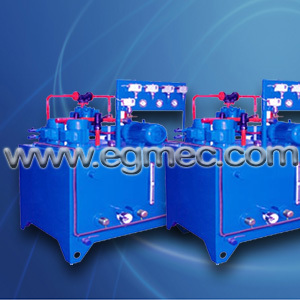You are here: home > Lubrication Equipment > Lubrication Equipment Working Principle
Product (427)
- Lubrication Distributors (28)
- Lubrication Equipment (26)
- Hydraulic Manifolds (47)
- Hydraulic Systems (16)
- Hydraulic Motors (9)
- Hydraulic Pumps (27)
- Rexroth Spool Valves (3)
- Rexroth Solenoid Valves (3)
- Rexroth Directional Valves (3)
- Solenoid Operated Directional Valve (3)
- Rexroth Solenoid Directional Valves (4)
- Hydraulic Directional Control Valve (3)
- Rexroth Directional Control Valves (3)
- Manual Directional Control Valves (3)
- Rexroth DBDS Pressure Relief Valve (3)
- DBDS Pressure Relief Valves (2)
- Rexroth DBD Valves (3)
- Rexroth Pilot Operated Pressure Relief Valves (4)
- Rexroth Pressure Relief Valves (4)
- Rexroth Relief Valves (3)
- Rexroth Flow Control Valves (6)
- Rexroth Check Valve (8)
- Yuken Directional Valves (6)
- Yuken Proportional Valves (3)
- Yuken Reducing Valves (2)
- Yuken Relief Valve (2)
- Yuken Check Valves (6)
- Vickers Directional Control Valves (2)
- Hydraulic Cartridge Valves (47)
- Hydraulic Valve Solenoids (27)
- Hydraulic Parts (24)
- Hydraulic Fittings (20)
- Valve Amplifiers (10)
- Hydraulic Pressure Sensors (17)
- Terex Parts (45)
- Others (5)
Products List (16)
Certificates (4)
News (24)
Hydraulic Manifold Blocks (7)
Hydraulic Control Valves (1)
Hydraulic Cartridge Valves (6)
Industrial Hydraulic Pumps (22)
Electromagnet Solenoids (18)
Lubrication Equipment (28)
Electronic Amplifiers (8)
Hydraulic Power Systems (10)
Hydraulic Hose Fittings (7)
Transporation Information (1)
Credit Report
Products Index
Company Info
Egmec Industry Co., Ltd. [China (Mainland)]
Business Type:Manufacturer, Trading Company, Agent
City: Ningbo
Province/State: Zhejiang
Country/Region: China (Mainland)
Lubrication Equipment
Lubrication Equipment Working Principle

The friction pairs in the whole film lubrication state run, this is an ideal situation. However, how to create conditions and take measures to form and meet the full film lubrication is a relatively complex task. People continue to practice long-term production of lubrication theory and research are explored, and some more mature, some of them are doing so. Now common to the dynamic pressure lubrication, hydrostatic lubrication, Hydrodynamic lubrication, boundary lubrication, extreme pressure lubrication, solid lubrication, lubrication principles of self-lubricating, etc., below is brief introduction.
1. Vice-hydrodynamic lubrication journal bearing rotating through the oil into the friction surface, the viscosity of lubricating oil and oil in the bearing clearance, deputy of the wedge effect of the formation of the resulting hydraulic fluid power, that the formation of bearing oil film, called hydrodynamic lubrication. Hydrodynamic lubrication theory on the assumption that the lubricant viscosity, the viscosity of oil at a certain temperature, the change does not change with pressure; followed by the assumption that the relative friction movement of raw surface is rigid, that is, by set and film pressure, without regard to its elastic deformation.
Under the above assumptions, the general non-overloaded (contact pressure at 15MPa) the sliding bearing, this assumption close to the actual situation. However, in the rolling bearing and gear surface contact pressure increased to 400 ~ 1500MPa, the above assumptions to the actual situation is different. Then the deformation of the surface friction of up to several times the film thickness and lubrication of the metal friction surface of the elastic deformation and changes in oil viscosity with the pressure of these two factors, to study and calculate the law of film formation and thickness of film cross-section shape and the pressure distribution within the film more realistic such as elastic lubrication to hydrodynamic lubrication.
2. Hydrostatic lubrication oil through a high-pressure hydraulic system, a certain pressure flow of oil to the holidays damper, the friction force for the surface of the gap, deputy campaign (as in the clearance of hydrostatic bearing, the plane static pressure the gap in the sliding rail, pressure screw gap medium). Friction surface in the campaign has not yet begun before the high pressure oil to be separated, forcing the formation of oil film, thus ensuring the deputy campaign can withstand a certain load conditions of work, are completely in the liquid lubrication, this lubrication is called hydrostatic lubrication.
3. Dynamic, static pressure lubrication with the scientific and technological development, industrial production in recent years appeared a new type of dynamic and static pressure lubricated bearings. Hydrodynamic, hydrostatic bearing full play the combined hydrodynamic and hydrostatic bearings bearing the advantages of both, to overcome the hydrodynamic bearings and hydrostatic bearings between the two deficiencies. Main works: When the Vice-bearing or brake during start using static liquid lubrication of the way into the bearing lubricating oil pressure will be high load area, the Jin-axis float to ensure that the conditions of liquid lubrication, thus avoiding the start or braking due to the speed changes during the formation of hydrodynamic oil film can not be leaving the metal friction surface (surface and bearing journal surface) generated by direct contact with friction and wear. When the bearing when the deputy into the stable operation at full speed, stop oil supply system can be static, and dynamic pressure with the formation of hydrodynamic oil film of lubricating oil, still hold the liquid journal in the bearing lubrication. In this way, theoretically speaking, in the bearing Deputy start, run, brake, reversing the whole process, completely avoid the semi-liquid lubrication and boundary lubrication, a fluid lubrication. Therefore, the friction coefficient is very low, as long as the viscosity of the oil has to overcome the fluid resistance of the internal friction between molecules on the line. In addition, the friction surface is completely static and dynamic pressure of oil film separating the oil film, so if the situation properly, have almost no wear, which greatly extend the working life of the bearing, saving the kinetic energy consumption.
4. Boundary lubrication (ie, the boundary friction) boundary lubrication is the lubricant from the friction surface between the molecules and the internal friction between molecules (ie, liquid lubrication) the transition to direct contact with the surface friction before the critical state. At this time there is a layer of friction interface adsorption film thickness is typically about 0.1μm, with some lubrication. We call this layer of thin boundary film. Boundary lubrication film depends on the nature of the friction surface; depends on the oil lubricant additives, extreme pressure additives on the friction surface of the metal structure of the boundary film formation with the oil viscosity has little mouth.

Lubrication Equipment Systems
5. Extreme pressure lubricant extreme pressure lubrication are a special case of boundary lubrication, friction is Deputy Commissioner in the override (or high contact stress), speed, temperature conditions, extreme pressure lubricant additives react with the metal friction surface generate a chemical reaction film, separated the two friction surfaces, and play a lower coefficient of friction, reduce wear and tear (or change the direct contact with the metal surface of serious wear and tear), to the role of lubrication, it is called extreme pressure lubrication.
6. Solid lubrication between the friction surface material into the solid lubricant powder, also can play a good lubricating effect. Friction between the two surfaces of solid lubricant, its shear resistance is very small, slight external force, will have a slip between molecules. This put the two outside the friction between the grinding into a solid lubricant in friction between molecules. There are two necessary conditions for solid lubricant, the first is a solid lubricant molecules should have a low shear strength, it is easy to slip; followed with solid lubricant to the friction surface has a strong affinity, in the friction process, always has maintained that the surface friction layer of solid lubricant, and a layer of solid lubricant which does not corrode the surface friction. Generally attached to the metal surface, a mechanical, but there are also form a chemical combination. The nature of the solid material with many, such as graphite, molybdenum disulfide, talc and so on. For non-layered structure for the solid lubricant, or soft metal, mainly for its low shear stress, play a role of lubrication, then it attached to the friction surface lubricating film. For the already formed solid lubricating film lubrication mechanism of boundary lubrication mechanism can explain the lubrication approximation.
7. All the above self-lubricating several lubrication, the friction course of the campaign, you need to add lubricant to the friction between the surface. The main area has a self-lubricating properties of solid lubricant lubrication powder mixed with other solid materials combined by pressing, sintering become useful, or immersed in the porous solid lubricant materials; or by direct suppression of solid lubricant to become useful, as friction surface. So that the friction process, without adding lubricants, still has a good lubrication. The mechanism of self-lubricating, including solid lubrication, boundary lubrication, or both of the situation. Made of PTFE products such as compressor piston rings, bearings, bushings, etc. are considered self-lubricating, so in these parts of the process, it does not require any lubricant can also be coupled with good lubrication.
Pre Page:
Common Feeding Ways for Single-Line...
Next Page:
Single-type Lubrication System...



